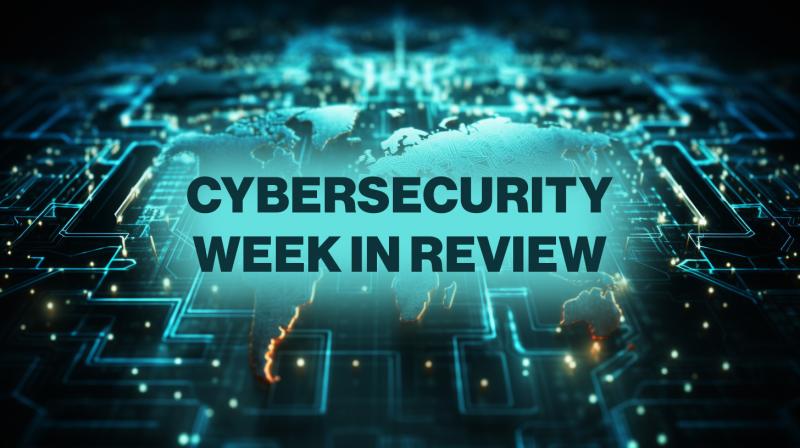Weekly Threat Trends
Week Commencing 10 Nov 2025
A story-driven deep dive into this week's evolving cyber landscape — adaptive malware, self-healing botnets, AI weaponization, deepfake-driven deception, and cloud persistence redefining how attackers think.

The week of 10–16 November 2025 has been one of contrast — a period where automation, deception, and regeneration fused into something bigger. Threat actors are now deploying malware that behaves like code in a repository: updated, versioned, and self-fixing. The distinction between hacker and developer is officially gone.
Top Trends at a Glance
- AI-driven adaptive malware — dynamic code rewriting, runtime compilation, and prompt-assisted regeneration.
- Self-healing botnets — distributed, peer-aware networks that reconstitute lost C2 nodes autonomously.
- Deepfake social engineering — voice, video, and behavioral mimicry fueling a surge in realistic BEC attacks.
- Cloud-based persistence — long-term access maintained through SaaS tokens, app scripts, and CI/CD pipelines.
- AI plugin abuse — weaponized automation interfaces used for reconnaissance and phishing personalization.
1. AI-Driven Adaptive Malware — When Code Writes Itself
Malware used to be written, tested, and distributed manually. Now it learns to write itself.
This week’s standout discovery involved a new adaptive loader, GenMorph, that uses an integrated AI module to modify its own bytecode between executions. Each infection results in a unique binary that behaves identically but looks different to any static scanner.
What makes GenMorph different:
- Instead of using precompiled polymorphic engines, it uses prompt-based regeneration. A local language model (1.2GB quantized variant) rewrites function names and control flow dynamically.
- Each infection produces unique obfuscation chains. Even sandbox replays on the same host yield distinct results.
- The loader can request new templates from its control server based on AV telemetry it collects post-installation.
Why this matters:
We’ve officially entered the “DevOps age of malware”. Adversaries are no longer content with static payloads — they treat infection as a software release cycle. Each run is a “version.” Detection logic now decays within hours rather than weeks.
Analyst observation:
Captured samples shared less than 15% similarity in binary structure despite identical functionality. Traditional string-based YARA rules had a 0% hit rate beyond the initial cluster.
Defender response:
- Prioritize behavioural correlation across variants rather than hashes.
- Deploy runtime instrumentation (EDR tracing of API calls, memory hooks).
- Build semantic YARA rules targeting capabilities — such as code-generation calls, dynamic compiler invocation, and encrypted PNG/JSON configs.
2. The Era of Self-Healing Botnets
This week’s biggest story in infrastructure was the emergence of rebuilding botnets.
A campaign dubbed “HydraPulse” by several researchers showed remarkable resilience — nodes could lose all C2 connectivity yet rebuild themselves within hours.
How it works
- Each bot maintains a small local peer list.
- When a node loses contact, it queries DHT records for peers sharing a signature key.
- Surviving peers supply fresh bootstrap nodes, seeded from blockchain-based TXT records.
- The network synchronizes new C2 endpoints, certificates, and instructions automatically.
In short: you can’t kill it all at once. Even large-scale sinkholing efforts are met with rapid recovery.
Why this matters:
Self-healing mechanisms mark the next evolutionary step from P2P botnets. With built-in peer memory, HydraPulse operates like a living organism — removing one part triggers regrowth elsewhere.
Indicators:
- Burst of TXT DNS queries to random domains.
- Peer handshake traffic over UDP 7070–8080 range.
- Consistent TLS fingerprints reused across distinct IPs.
- Reappearance of previously blocked IPs within 24h of takedown.
Defensive actions:
- Deploy network anomaly detectors tuned to repeated failed C2 retries followed by recovery.
- Track certificate reuse across distinct ASN blocks.
- Work with ISPs on pattern-based blocking vs. IP-based blacklists.
3. Deepfake Social Engineering — The New Face of Fraud
A dramatic uptick in AI-generated deception unfolded this week. The trend now extends far beyond voice cloning — attackers are synthesizing video personas that can conduct short, convincing interactions.
Case: The Synthetic HR Interview
A cybersecurity job applicant received an interview via Zoom with what appeared to be a company HR representative. The interviewer’s face and voice matched the real employee — yet internal logs later confirmed she was on vacation. The attacker used pre-trained facial gestures and a cloned voice, combining them through an off-the-shelf deepfake app. The call lasted five minutes and collected private PII under the guise of onboarding.
Why this works
Humans rely on visual trust cues — tone, face, and body language. Once those are artificially replicated, traditional awareness training breaks down.
Deepfake operators have now industrialized their process — creating “personas” for sale, complete with LinkedIn, GitHub, and corporate email domains.
Counter-defensive strategies:
- Adopt biometric verification for video meetings (facial micro-blink or liveness checks).
- Require dual confirmation for sensitive calls: an internal chat ping before or after a video request.
- Run random deepfake detection scans on corporate videos, looking for identical blink intervals or facial compression artifacts.
Key insight:
We’ve entered the psychological warfare phase of social engineering. The goal is no longer to trick your inbox — it’s to trick your brain.
4. Cloud Persistence — The Threat You Can’t Format Away
Traditional persistence implants are noisy. Cloud persistence, however, is silent, remote, and often invisible to EDR.
Examples this week
- Threat groups embedding backdoors in Google App Scripts tied to shared drives.
- AWS Lambda triggers configured to exfiltrate data when S3 buckets are modified.
- GitHub Actions workflows abusing secrets to fetch payloads from CI runners.
- Office 365 Power Automate flows repurposed to deliver hidden commands.
These techniques represent a new doctrine: “Live in the cloud, die in the cloud.” Attackers are setting persistence points that survive local cleanup, credential rotation, and even machine reimaging.
Why it’s dangerous:
- Tokens and app credentials can remain active even after password resets.
- Visibility gaps: most SOCs don’t monitor low-level SaaS activity.
- Cloud-native persistence evades EDR and antivirus — there’s no “process” to detect.
Mitigation:
- Implement cloud SIEM ingestion for SaaS logs.
- Force short token lifetimes and require user consent for reauthorization.
- Review all automation rules in SaaS platforms weekly.
- Isolate build systems with least privilege — treat pipelines as critical assets.
5. Weaponized AI Plugins — The API of Deception
AI plugin ecosystems (like browser extensions and chat model integrations) are being repurposed for cyber offense.
Threat actors are creating or hijacking plugins that execute background reconnaissance — gathering sensitive metadata, mapping company APIs, or scraping exposed endpoints.
Observed cases:
- An “SEO assistant” plugin secretly enumerating WordPress
/wp-jsonroutes. - A browser “email summarizer” extension siphoning Gmail thread IDs and subjects to a remote server.
- AI prompt chains generating personalized phishing for employees based on scraped public bios.
Why this matters:
These tools blend into corporate productivity ecosystems. They use legitimate permissions and appear benign — until correlated with exfil patterns.
Recommendations:
- Restrict AI plugin installation to whitelisted marketplaces.
- Log all plugin network activity through browser telemetry or proxy rules.
- Conduct periodic plugin audits and remove dormant integrations.
- Educate users: plugins can be phishing automation engines disguised as helpers.
6. Malware Families of the Week
Several high-impact malware variants dominated submissions:
A. NovaStrike (Windows/Go hybrid)
An evolving loader that decrypts payloads in GPU memory, avoiding RAM-based detection. It utilizes OpenCL to execute parts of the loader logic within the GPU pipeline. Observed deploying RisePro and Vidar.
B. IronFog (Linux)
A backdoor using systemd service impersonation. Its persistence involves adding “systemd-update” units and using DNS-over-HTTPS for C2. Designed for cloud containers, IronFog hides command execution within /var/log/auth.log by encoding tasks as fake SSH entries.
C. HaloSteal (macOS)
A lightweight Objective-C stealer disguised as a menu-bar battery widget. Captures browser autofill data, crypto wallets, and screenshots, then uploads them to iCloud Drive clones.
Each of these illustrates a key point: the OS barrier is gone — attackers now code once and compile everywhere.
7. Defender’s Corner — Tactical Priorities
Focus this week revolves around visibility and verification.
Endpoint & Network
- Hunt for GPU memory allocations by non-graphical processes (OpenCL/OpenGL misuse).
- Detect new service units with “update” or “policy” in names.
- Monitor WebSocket connections from PowerShell, Node.js, and WScript.
- Capture process lineage graphs for script interpreters — especially nested ones.
Identity & Cloud
- Enforce step-up authentication when OAuth tokens are reused.
- Create watchlists for new automation rules or pipelines in SaaS tenants.
- Use CASB anomaly detection for OneDrive/Dropbox accessed by non-user agents.
Training & Awareness
- Run internal deepfake recognition workshops — include side-by-side comparisons.
- Update acceptable-use policies to cover AI tool deployment and plugin risk.
- Encourage employees to report “unusual but convincing” digital interactions immediately.
8. The Bigger Picture — Malware as an Ecosystem
This week underscored that modern malware isn’t just software; it’s an ecosystem — a distributed, self-evolving organism.
Attackers are leveraging the same innovation pipeline defenders use:
- Continuous integration for payloads.
- AI-assisted debugging and testing.
- Cloud hosting for distribution and staging.
- Decentralized peer-to-peer for resilience.
The shift:
- From infection to presence. They don’t just want to execute — they want to live inside your workflow.
- From exfiltration to integration. Data theft now resembles legitimate API usage.
- From binaries to behaviours. The “malware” is increasingly abstract, less a file, more a function.
Strategic defensive takeaway:
To survive this evolution, detection must mimic it — continuous validation, agile YARA updates, and threat models that account for runtime mutation.
Think less like an antivirus vendor, more like a software architect: what’s the attacker’s pipeline, and where can you break it?
9. Communicating to Leadership & Staff
For Executives:
- Prioritize identity resilience — MFA fatigue attacks and deepfake impersonations are converging.
- Invest in incident rehearsement drills simulating “synthetic authority” scams.
- Ensure CFOs and HR leaders have secure verification protocols independent of video or voice.
For SOC & IT Teams:
- Baseline your AI/LLM API usage; unexpected outbound calls can indicate compromise.
- Rotate detection engineering duties weekly to maintain fresh perspectives.
- Document every observed mutation pattern — treat threat evolution like version history.
For General Staff:
- Always verify “urgent” communication — especially involving finance or credentials.
- Do not trust plugin prompts requesting extra permissions.
- Pause and escalate if any software “updates itself” outside official channels.
10. Week in Summary — The Convergence of Adaptation
November’s second week offered a sobering glimpse into cyber’s next chapter: autonomous adaptability.
We saw AI used not just for social manipulation, but for operational mutation — malware that regenerates, botnets that rebuild, and deception that looks human.
The industry’s next challenge isn’t faster detection; it’s adaptive defense.
Systems must learn, respond, and rebuild just as quickly as their adversaries. Automation isn’t a luxury — it’s survival.
To defenders, this is not bad news — it’s the inevitable frontier. The same AI transforming offense can empower defense when used boldly and ethically. The key is speed, visibility, and collaboration.
Stay sharp. Watch the patterns beneath the chaos. And remember — the difference between innovation and exploitation is intent.


